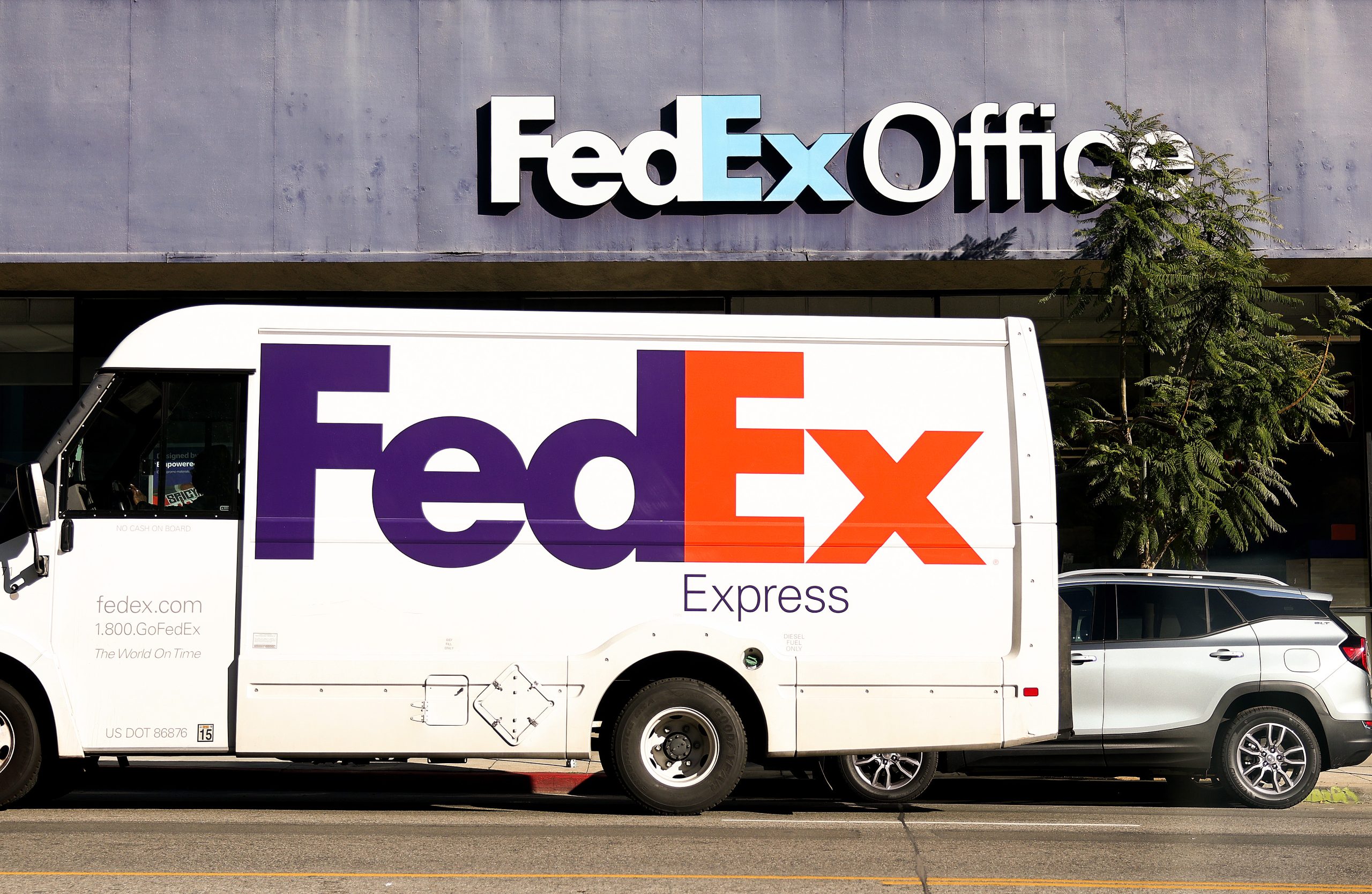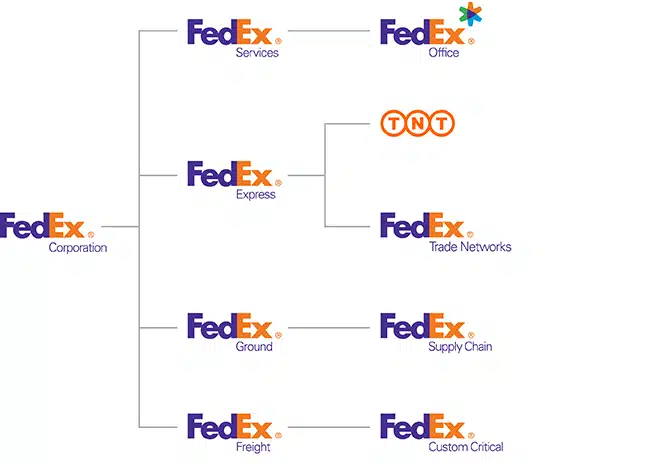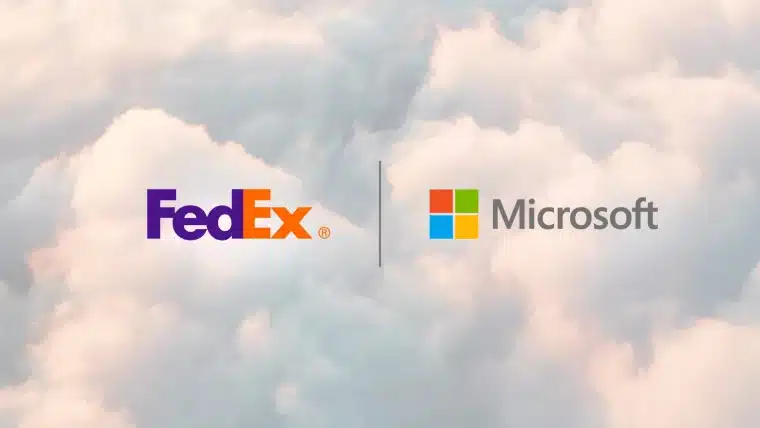Delivery company FedEx’s net worth of $72.13 billion makes it the third-largest logistics company in the world by market cap. Having found initial success by introducing overnight delivery to the US, FedEx quickly expanded to international markets and continued to innovate in the sector.
However, FedEx has faced recent pressure from rising fuel prices and changing consumer preferences, forcing it to rethink its organizational operations in order to stay profitable.
This article, compiled from trusted sources by Business2Community experts, provides an overview of FedEx’s net worth, financial performance, and current position in the market. We’ll look at how FedEx benefitted from the pandemic and reached its current valuation, and what the company is doing to secure a prosperous future.
FedEx Key Company Data
FedEx Net Worth: $70.73 billion
Date Founded: May 1971
Founded By: Frederick W. Smith
Current CEO: Raj Subramaniam
Industries: Logistics
FedEx Corporation Stock Ticker: NYSE: FDX
Dividend Yield: 1.9%
What is FedEx’s Net Worth?
FedEx’s net worth is $70.37 billion as of November 2024. This figure, which is also known as market cap, has fluctuated between $60 billion and $75 billion throughout 2024.
The company has been working to consolidate its operating companies into one organization and transform its operations – a program known internally as DRIVE – to create an estimated $4 billion of cost efficiencies in FY25.
Fedex’s peak net worth to date is $83.32 billion, achieved on May 27, 2021, as the logistics company rode the wave of the COVID home delivery boom and was contracted by the US government to deliver vaccines, PPE, and humanitarian relief.
Having been founded in 1971 as Federal Express Corporation, the company went public on April 12, 1978, with shares offered at $24. In December 1978 it began trading on the New York Stock Exchange with stock ticker FDX.
In 1983, FedEx became the first American company to reach $1 billion in annual revenue without mergers or acquisitions.
FedEx’s share price first topped $50 in March 1999 and had grown to $100 by November 2005. Shares peaked at over $250 in early 2018 but had fallen to less than half this value by March 2020.
However, increased operations during the pandemic led to an all-time high value of $315.59 on May 27, 2021. The shares came close to this value in July 2024, again topping $300, and are currently trading at $295.21.
FedEx’s fiscal year runs from June 1 to May 31, and it releases its annual reports in mid-July.
FedEx Revenue
FedEx reported revenue of $87.69 billion for FY24 (ending May 31, 2024). This is a drop of 2.73% from the $90.16 billion achieved in FY23, partly because of a shift in consumer demand towards slower, less costly shipping services – a trend that FedEx believes will continue into the following year.
However, the company’s operating income climbed from $4.91 billion (5.4%) in FY23 to $5.56 billion (6.3%) in FY24; an increase of 13.2%. It remains below the $6.25 billion (6.7%) operating income achieved in FY22, aided by increased demand during the pandemic.
The breakdown of FedEx FY24 revenue by business segment is:
- FedEx Express: $40.86 billion
- FedEx Ground: $34.26 billion
- FedEx Freight: $9.08 billion
The largest segment, FedEx Express, is further broken down as follows:
- US domestic packages: $15.5 billion
- International export packages: $13.7 billion
- International domestic packages: $4.2 billion
- US freight: $2.4 billion
- International freight: $4.0 billion
Here is FedEx’s revenue history for the past 10 fiscal years:
| Year | Revenue ($ billions) |
| 2015 | 47.453 |
| 2016 | 50.365 |
| 2017 | 60.319 |
| 2018 | 65.450 |
| 2019 | 69.693 |
| 2020 | 69.217 |
| 2021 | 83.959 |
| 2022 | 93.512 |
| 2023 | 90.155 |
| 2024 | 87.693 |
FedEx Dividend History
FedEx pays quarterly dividends which have increased steadily over the past decade from $0.15 per share to the current $1.38 per share, giving an annual dividend of $5.52 per share and a dividend yield of 1.9%.
The following table shows a full history of FedEx dividends paid for the past 10 years:
| Payment Date | Dividend ($) |
| 10/01/24 | 1.38 |
| 07/09/24 | 1.38 |
| 04/01/24 | 1.26 |
| 01/02/24 | 1.26 |
| 10/02/23 | 1.26 |
| 07/03/23 | 1.26 |
| 04/03/23 | 1.15 |
| 01/03/23 | 1.15 |
| 10/03/22 | 1.15 |
| 07/11/22 | 1.15 |
| 04/01/22 | 0.75 |
| 12/27/21 | 0.75 |
| 10/01/21 | 0.75 |
| 07/12/21 | 0.75 |
| 04/01/21 | 0.65 |
| 12/28/20 | 0.65 |
| 10/01/20 | 0.65 |
| 07/13/20 | 0.65 |
| 04/01/20 | 0.65 |
| 01/02/20 | 0.65 |
| 10/01/19 | 0.65 |
| 07/08/19 | 0.65 |
| 04/01/19 | 0.65 |
| 01/02/19 | 0.65 |
FedEx conducted its first stock buyback in 2013 and has since authorized five more repurchase programs. In FY24, FedEx repurchased approximately 9.8 billion shares with a total value of $2.5 billion. The company intends to repurchase a further $2.5 billion of shares in FY25, having announced a new $5 billion buyback program in March 2024.
FedEx conducted a 2-for-1 stock split on September 26, 1978, shortly after its IPO. There have been no further stock splits since then.
Who Owns FedEx?
FedEx Corporation is a publicly traded company owned by its shareholders. Significant shareholders include Vanguard Group (8.24%), Blackrock (6.11%), and Dodge & Cox (5.38%). Founder Frederick W. Smith is the largest individual shareholder, with 8.2% of company stock, while insiders own a further 8.14% of the company.
The company was founded by Frederick W. Smith and made its initial debut on the New York Stock Exchange under the ticker symbol FDX in 1978. Smith chose the name Federal Express Corporation to attract the Federal Reserve Bank as a customer and evoke patriotism. Today, he remains a significant figure in the company, both serving on the board and holding a substantial amount of its stock.
FedEx was founded in 1971 in Little Rock, Arkansas, before relocating its headquarters to Memphis, Tennessee, to take advantage of the central location and favorable weather. The company revolutionized the delivery of mail and packages with its system of overnight shipping and tracking packages in real-time.
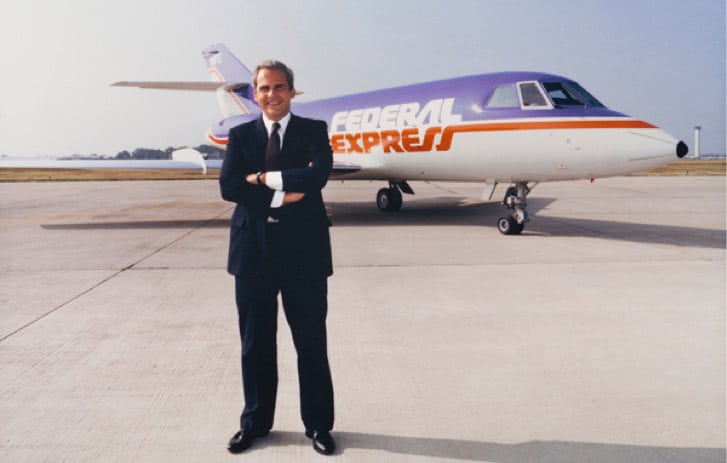
The inspiration for FedEx came from Frederick W. Smith’s college term paper, in which he outlined the logistical challenges businesses faced and proposed a company that could address these issues through strategic distribution methods. Despite achieving an average grade and initial skepticism, this concept eventually proved to be ludicrously successful.
In 2022, Smith shared his unwavering belief in his entrepreneurial vision with the American Academy of Achievement, emphasizing the inherent optimism and resilience required to succeed:
I was very, very, very sure that what we were doing was extremely important and was destined to be successful ... and most entrepreneurs, I think you would find, have that sort of green wire laid in there just a little bit crosswise.
Smith, dubbed the Father of the Overnight Delivery Business, is acclaimed for pioneering the express transportation and logistics industry, greatly influencing the past four decades of global commerce. Under his leadership, FedEx has been recognized for its innovation, efficiency, and customer service.
Who is the FedEx CEO?
The current CEO of FedEx Corporation is Raj Subramaniam. He is the second CEO in FedEx history, succeeding the company’s founder.
| Period | CEO Name |
| 1971 – 2022 | Frederick W. Smith |
| 2022 – present | Raj Subramaniam |
Growth and Development of FedEx
Understanding the trajectory of FedEx over the decades showcases the company’s resilience and innovative spirit in the logistics and transportation industry.
A History of FedEx – Key Dates
- FedEx, formerly Federal Express, was founded by Fred Smith in 1971 in Little Rock, Arkansas.
- In 1973, FedEx officially began overnight shipping with 14 small aircraft delivering across 25 cities in the United States.
- FedEx became the first American company to reach $1 billion in annual revenue without mergers or acquisitions in 1983.
- In 1994, FedEx launched its website and introduced package tracking, becoming the first transportation company to offer this service online.
- FedEx has announced its commitment to achieve carbon-neutral operations by 2040.
1971-1980 – Pioneer Years of FedEx
In April 1973, FedEx began its operations with 14 small aircraft based at Memphis International Airport. On its first night of operations, FedEx delivered 186 packages to 25 US cities. This marked the beginning of a new era in the world of express shipping.

Facing financial hurdles in the early days, founder Smith nearly pushed FedEx into bankruptcy. In 1974, with only $5,000 left, he gambled at a Las Vegas blackjack table and won $27,000, which temporarily covered the company’s fuel expenses. While this is a great story in hindsight, it was a pretty terrible idea that probably shouldn’t be replicated.
By 1975, FedEx introduced its first drop box, making package send-off more convenient and signaling the start of a vast network of drop boxes, enhancing customer service.
In 1978, Smith emphasized tracking’s importance, foreshadowing FedEx’s pioneering efforts in technology for package tracking.
FedEx launched COSMOS, the first automated customer service center in its industry in 1979, allowing customers to track their packages and receive updates without direct human intervention.
1980s – Expansion and Technology Integration
The 1980s marked a period of significant growth and innovation for FedEx. By 1981, FedEx Corp had established its overnight delivery service, “Overnight Letter,” creating a new standard in the shipping industry that promoted speed and reliability.
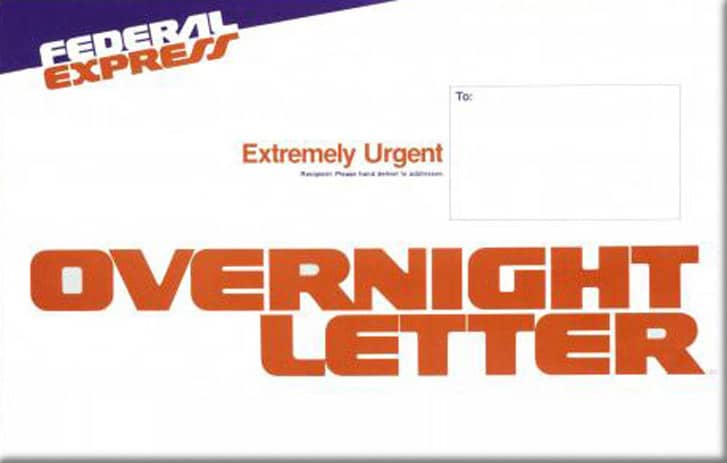
In the same year, FedEx introduced SuperHub at Memphis International Airport, a massive sorting facility that could handle higher volumes of packages with increased speed and accuracy.
In 1983, FedEx achieved a financial milestone by reporting $1 billion in revenues, becoming the first company in US history to reach this mark within ten years of startup without mergers or acquisitions.
The company launched its first international service to Europe in 1984, providing businesses with a reliable and fast shipping option for their global operations.
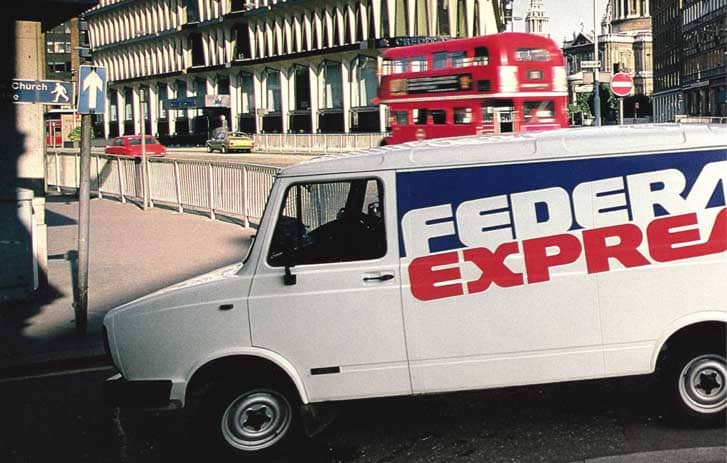
FedEx introduced the use of handheld computers for its couriers in 1986. This technology, known as the FedEx SuperTracker, provided precise and timely information about shipments.
In 1989, FedEx acquired Flying Tiger Line, marking its entry into international markets and substantially enlarging its air cargo capacity.
By the end of the decade, FedEx had also established a presence in Asia and Latin America, solidifying its position as a global logistics provider.
1990s – Rebranding and the Rise of Ecommerce
FedEx continued to grow through digital innovation and strategic acquisitions. In 1994, Federal Express officially adopted “FedEx” as its brand name, recognizing the nickname that customers had been using for years.
The company also foresaw the impact of the internet on commerce and launched FedEx.com in 1994, the first transportation ecommerce platform. This provided customers with real-time updates on their shipments and improved transparency in the shipping process.
In 1995, FedEx became the only US-based, all-cargo carrier with rights to serve China, positioning the company as a key player in one of the world’s fastest-growing markets.
In the following year, FedEx introduced FedEx interNetShip®, now known as FedEx Ship Manager®, enabling customers to process shipments online for the first time. This innovation improved the convenience of shipping services, allowing customers to manage their shipments from the comfort of their homes or offices.
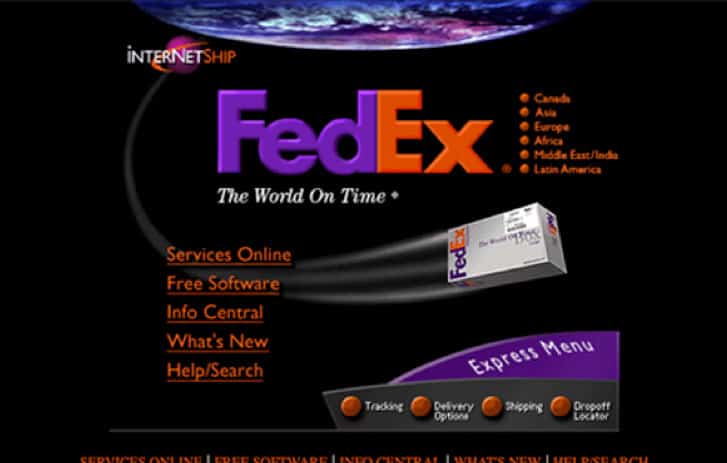
The narrative of FedEx’s expansion took a monumental turn in 1998. This year wasn’t just about a singular acquisition; it was about laying the groundwork for the future. The formation of FDX Corporation, later rebranded as FedEx Corporation, was a strategic move that broadened FedEx’s horizon beyond express delivery.
The acquisition of ground small-package carrier RPS, now FedEx Ground, and Western US less-than-truckload (LTL) carrier Viking Freight, integrated into FedEx Freight, diversified the company’s service offerings.
The same period saw FedEx extending its capabilities in logistics and technology solutions through the acquisitions of Caliber Logistics and Caliber Technology (now FedEx Services), along with Roberts Express (rebranded as FedEx Custom Critical), enhancing FedEx’s specialty shipping and logistics portfolio.
2000s – Further Innovations and Ecommerce Advancements
With the rise of ecommerce, FedEx expanded its portfolio to meet the changing needs of businesses and consumers. In 2000, FedEx launched the FedEx Home Delivery service, catering to the growing trend of online shopping.
FedEx Custom Critical, a time-sensitive freight carrier, and FedEx Trade Networks, a customs clearance and logistics provider, were launched in response to growing demand. FedEx further expanded its LTL operations in the US with the acquisition of American Freightways, later rebranded as FedEx Freight East, strengthening its domestic freight delivery network.
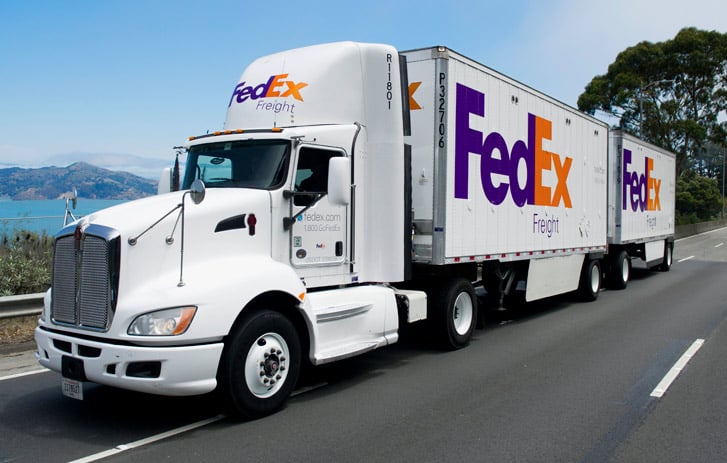
Between 2000 and 2001, several acquisitions were rebranded under the FedEx name, including FedEx Express, FedEx Ground, FedEx Custom Critical, FedEx Global Logistics, and FedEx Freight.
The acquisition of Kinko’s in 2004, renamed FedEx Office, provided customers with access to shipping and print services, enhancing the company’s retail presence worldwide. Continuing its momentum, FedEx acquired Watkins Motor Lines in 2006, later rebranded as FedEx National LTL and FedEx Freight Canada. This move solidified Fedex’s footprint in the Southeastern US regional LTL carrier space.
In 2009, FedEx introduced FedEx SmartPost in collaboration with the United States Postal Service, optimized for low-weight residential shipments, another response to the booming ecommerce sector.
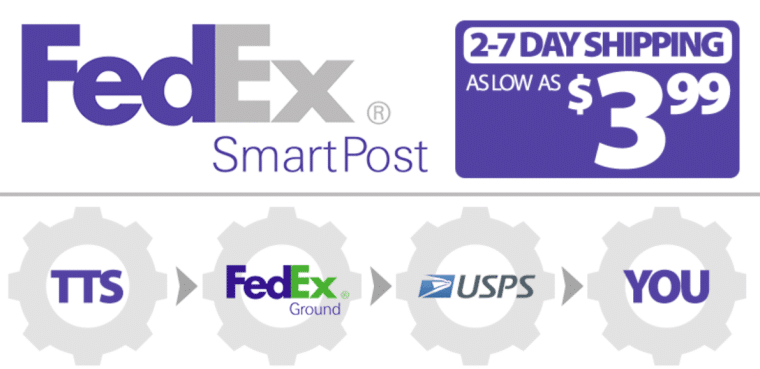
2010s – The Evolution Towards Sustainability and Seamless Service
FedEx’s focus on sustainability led to the introduction of electric and hybrid vehicles into their fleet in 2010, reflecting a commitment to environmental responsibility alongside logistical excellence.
FedEx has consistently leveraged technology to improve service delivery and operational efficiency. In 2013, the development of the FedEx Delivery Manager allowed customers to customize delivery times and locations. Raj Subramaniam, previously the executive vice president and now CEO, stated:
FedEx Delivery Manager puts convenience in the hands of our customers. These flexible options help provide more ways for our customers to manage deliveries to suit their schedules.
In 2015, FedEx Corp. enhanced its supply chain management capabilities by acquiring GENCO, a North American leader in reverse logistics and a comprehensive provider of end-to-end product lifecycle solutions.
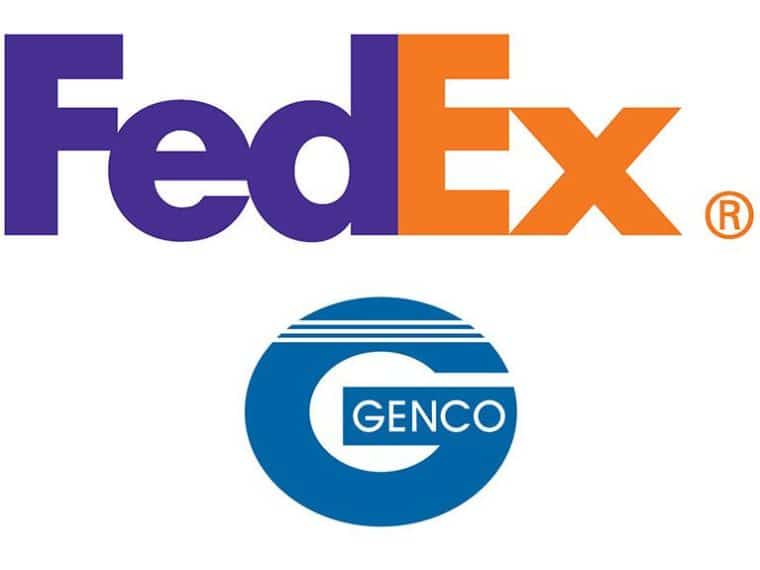
FedEx acquired Dutch delivery company TNT Express in 2016 to expand its presence in Europe and gain access to TNT’s extensive European road network.
2020s – Adapting to the Changing Landscape
The onset of the COVID-19 pandemic in 2020 saw FedEx once again demonstrating its resilience and adaptability. As consumer behavior shifted towards online shopping, FedEx responded by hiring thousands more workers and investing in technology for efficient operations. FedEx also partnered with leading pharmaceutical companies to deliver essential medical supplies during the global health crisis.
During this period, FedEx continued to innovate, launching FedEx Surround with Microsoft, a digital analytics solution offering real-time visibility for package tracking, enhancing supply chain resilience.
In 2021, the company announced plans to achieve carbon-neutral operations by 2040, further solidifying their commitment to sustainability and innovation. The early 2020s also saw FedEx expanding its autonomous delivery services and exploring drone delivery.
May 2024 saw FedEx hit the headlines for all the wrong reasons. One of its Boeing planes had to undertake an emergency landing at Instanbul airport. The incident occurred when the 767’s landing gear didn’t deploy. You can read the full details of the FedEx – Boeing incident here.
History of the FedEx Logo
The FedEx logo has undergone a few transformations since the company’s inception. The original FedEx logo, from 1973, featured the company’s initial name, Federal Express.
The original logo had the company’s former name in orange and purple lettering, with occasional color variations.
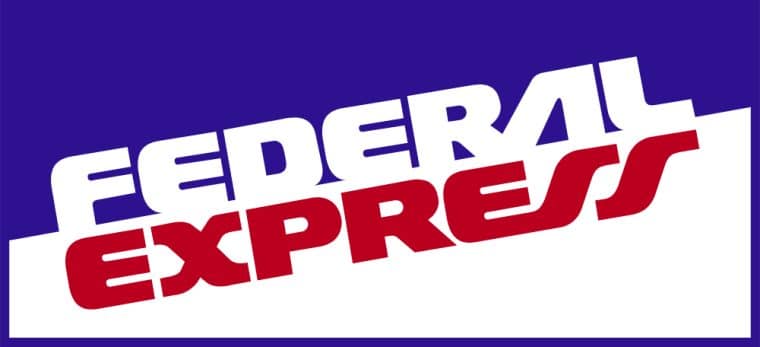
After acquiring the Flying Tigers network and expanding around the world, Federal Express underwent a brand identity update in 1991. A transitional logo, between the original and the iconic “white arrow” version, emerged. Retaining the orange-and-purple palette and rounded typeface, it introduced the shortened name, laying the groundwork for the next iconic logo.

In 1994, the renowned “white arrow” FedEx logo was conceived by Lindon Leader, Senior Design Director at Landor Associates. Inspired by Northwest Orient Airlines’ use of negative space to create a hidden message, Leader crafted the arrow within the FedEx logo.
Initially unnoticed by many, including senior executives, the arrow symbolizes movement and progress. The logo revolutionized logo design with its innovative use of negative space, garnering over 40 awards globally.
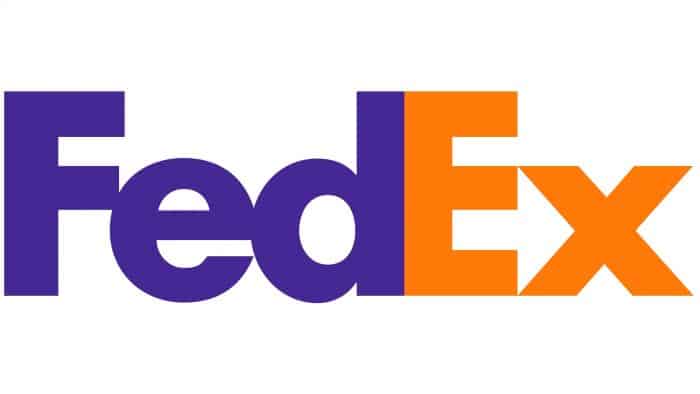
The color combinations within the FedEx logo serve as a visual identifier for the various FedEx shipping services. Each color corresponds to a specific segment, aiding in instant recognition and differentiation.
For instance, the color orange within the “Ex” denotes a subsidiary of FedEx, FedEx Express, symbolizing speed and urgency in delivery. A green “Ex” refers to FedEx Ground, representing efficiency and reliability in ground transportation services. A red “Ex” represents FedEx Freight for strength and robustness in freight shipping solutions.
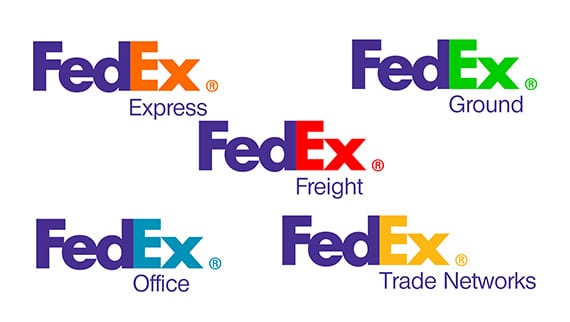
Beyond these primary divisions, the remaining operating units are also distinguished by distinct colors within the logo.
A blue “Ex” designates FedEx Office, highlighting the brand’s commitment to providing comprehensive office solutions. A yellow “Ex” refers to FedEx Trade Networks, reflecting the company’s expertise in global trade facilitation and logistics management.
Latest Developments & Investments
FedEx continues to expand its electric vehicle (EV) fleet, recently incorporating 150 BrightDrop Zevo 600s, electric delivery vans designed for last-mile services. This addition is part of a larger plan to integrate 2,500 all-electric vehicles in the coming years. These EVs are powered by General Motors’ Ultium Platform, allowing for a driving range of up to 250 miles per charge.
In parallel with electrification, FedEx is also investing heavily in AI and automation technologies. The company has introduced AI-powered robots to optimize the loading of its trailers. Through partnerships with robotics firms like Dexterity AI, FedEx is enhancing the speed and efficiency of package handling, further improving its supply chain automation.
Additionally, the company has been leveraging AI-driven analytics to transform its supply chain operations, moving from reactive to predictive models. This enables FedEx to offer more precise delivery estimates, improving customer satisfaction and reducing costs. The use of big data and machine learning is empowering FedEx to optimize logistics, creating a more resilient and responsive global supply chain.
The Future of FedEx
FedEx, like many pioneering companies, has brilliantly adapted to changing market dynamics and has often been ahead of the curve, shaping the future of logistics and delivery services.
With a continuous focus on innovation, FedEx is positioning itself at the forefront of technological advancements in logistics. One area of significant investment is in automation and robotics, aiming to enhance efficiency and reduce delivery times. FedEx is also exploring the use of AI to optimize delivery routes and improve package tracking accuracy.
One of the next evolutionary steps for FedEx involves deepening its commitment to sustainability and eco-friendly logistics solutions, by continuing to expand its fleet of electric vehicles and investing in alternative fuel sources to minimize its carbon footprint.
FedEx is also looking to enhance its customer experience by leveraging big data and analytics, enabling more personalized and flexible delivery options. This focus on customer-centric innovations is anticipated to move towards mass personalization in CRM.
Despite challenges, such as fluctuations in global trade volumes and stock prices, FedEx’s continued investment in technology and sustainability positions the company well for the future.
